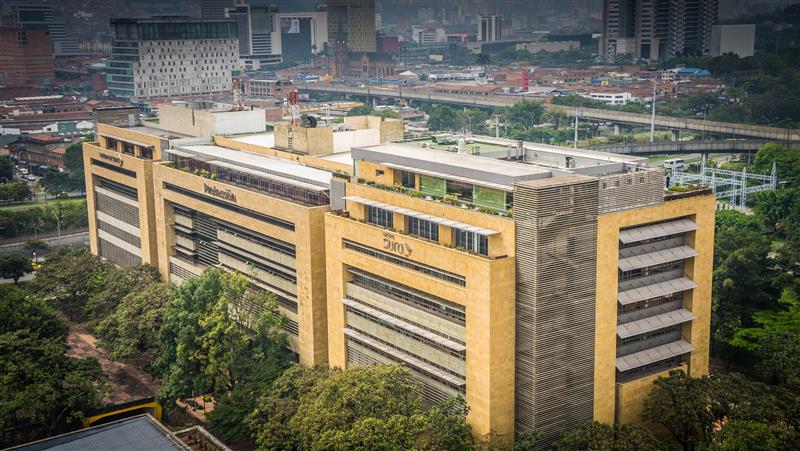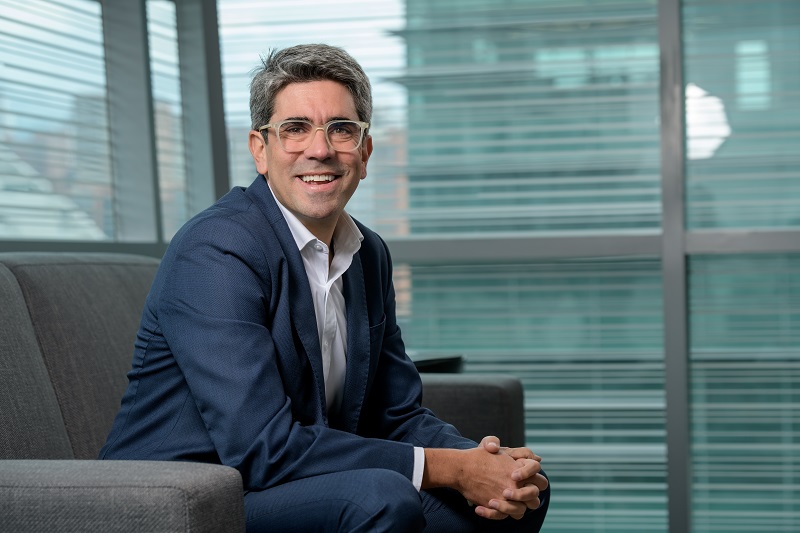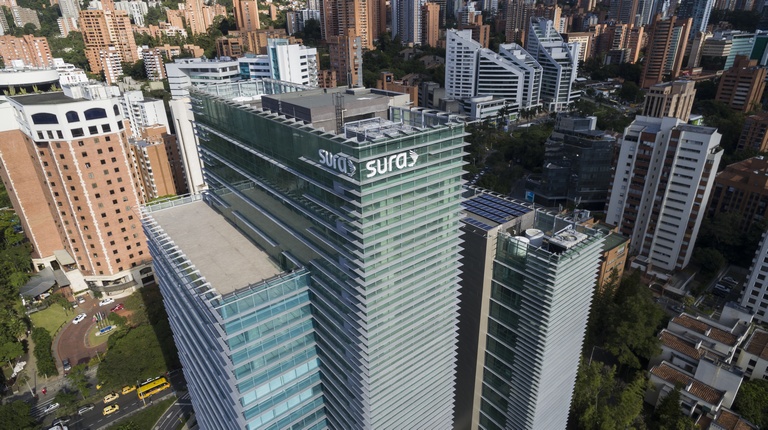The discussion on the viability of the pension systems continues in key countries, such as Chile, Peru and Colombia, while in other countries approved changes are being implemented. Regional overview.
By Valora Analitik for Grupo SURA*
The boom in social protection reforms in several Latin American countries is taking place at the same time as a new cycle of alternative governments throughout the region, which is why the focus on pensions has once again gained momentum in both the political and economic spheres.
In view of this, the International Federation of Pension Fund Administrators (FIAP) has underlined the fact that pensions funds are part of a vehicle and that people´s savings therein contained belong to each fund member, so that radical changes to contribution schemes represent a risk to the sustainability of these pension systems.
Guillermo Arthur, President of FIAP, has emphasized that high fiscal costs and job market distortions could occur if benefits are too high or if their design contains elements that discourage pension contributions and affect labor formality rates.
Similarly, the Economic Commission for Latin America and the Caribbean (ECLAC) has stressed the fact that the reforms being carried out throughout the region should be aimed at pension systems that involve all the inhabitants of a country as well as the different generations. Also, and since these resources are mainly contributed by workers, it is imperative that they be granted participation mechanisms and that the management and use of these resources be transparent.
"While the reform agendas that have been proposed or approved do not entirely dispense with an ideological approach, the fact that the region is experiencing longer life expectancies makes it all the more necessary to increase the retirement age in order to maintain the necessary level of economically active population to ensure the viability of Latin American pension systems," stated Fabiano Borsato, Chief Operating Officer for the Latin America-focused investment firm Torino Capital.
This is the region's main challenge in pension matters. Currently, according to a report this year by the Development Bank of Latin America (CAF), only 8% of the region's population is over 65 years of age, far below the 18% in continents such as Europe.
However, this scenario is set to worsen in the coming years, as the figure for Latin America is expected to double to 17.5% by 2050 and to grow to 30% by the end of the century.
For this analyst, another major challenge for any of the region´s reform initiatives "has to do with the informality of the job markets".
Currently, in the region, Argentina has a 96% contributory pension contribution rate, the highest in Latin America, according to data collected by the Inter-American Development Bank (IDB).
Chile, one of the countries where pension reform is being discussed, for example, at the end of last year recorded a 26% contributory pension rate and another 69% non-contributory pension rate.
In this context, SURA Asset Management (SURA AM), one of the leading players in pension fund management throughout the region, has argued that any pension reform should focus on ensuring increased coverage of the population having access to a pension, while guaranteeing the sustainability of the pension systems themselves.
"It is important that the legislative branch is clear on which structural reforms are needed in their individual countries in order to drive development. That is where we can provide our support based on our knowledge on what those parametric adjustments are that must be made over time in order to achieve economic development," stated Ignacio Calle, CEO of SURA AM.
Mexico: the active pension reform in Latin America
Back in 2020, when the world was more focused on leaving the harsher stage of the Covid-19 pandemic, Mexico went ahead with the corresponding discussions and implemented a pension reform.
Two years later, this pension reform has allowed the country among other things, to climb from 35th to 15th place in the Global Pension Index published by the Organization for Economic Cooperation and Development (OECD), a notorious improvement compared to before this reform was introduced.
This means that the reform proposed under the government of Andrés Manuel López Obrador "improved the general retirement conditions of workers through aspects such as extending guaranteed pensions, but there is still a long way to go in terms of voluntary savings, for which the economic policy framework must promote, mainly, the formalization of the labor market itself, given that informality represents a significant limitation to increasing savings rates on the part of workers," added Borsato.
Karla Schiaffino, senior analyst at Control Risks for Mexico, also agrees with this premise and believes that the structural challenges of the country itself have meant an implicit ceiling for its citizens: "First of all, the high degree of job market informality throughout the country means that a high percentage of employees do not have access to these resources," said Ms. Schiaffino.
Informality also has an impact on the number of qualifying weeks, thus limiting the number of people who have access to this benefit. In the meantime, Mexican President López Obrador once again referred to this issue, assuring that additional reforms to the pension system "are still necessary".
For the aforementioned analyst at Control Risks, although the Mexican president has not offered more details, it is likely that "they will focus on increasing costs for companies" and not so much for the government so as to avoid compromising public finances.
The proposal in El Salvador
This Central American country also presented a proposal to reform pensions through several key elements. The most noteworthy of these changes is an increase of 1% in the system's contribution rate, going from 15% to 16%. This increase shall be assumed by the employer, whose contribution rate rises to 8.75%, while maintaining the employee's contribution at 7.25%.
It is also worth noting the increase in the contribution rate from 8.1% to 9% to the Individual Pension Savings Account as well as the increase in the contribution rate to the Solidarity Guarantee Account from 5% to 6% while maintaining the Solidarity Guarantee Account in operation, the purpose of which is to pay out pensions when the Individual Pension Savings Account is exhausted.
In order to comply with the above, the government's project contemplated setting up the Salvadoran Pension Institute (ISP in Spanish), which will ensure the rights of pension contributors, regulate pension funds and assume previously acquired obligations.
The Reform in Uruguay
But not all reforms are related to the Executive's intentions to change the pension system, but also to how the country's population has evolved. Uruguay, during Lacalle Pou's presidency, faced discussions for a new pension system, marked by a context of higher life expectancies, averaging out at 75 years which is the highest in the region.
For this reason, the main idea of the Uruguayan pension reform, which shall begin to be implemented during the second half of this year, raised the pension age from 60 to 65 years, the same as in France, provided that at least 30 years of contributions have been paid into the system.
"Like all pension reforms that propose increasing the retirement age, the Uruguayan reform was unpopular and generated many protests and strikes called for by unions, social movements and opposition parties," stated Marina Pera, the Uruguayan analyst for Control Risks.
Ms. Pera stressed that the reform, which now allows people to continue working once they retire, "shall have long-term effects on public accounts, because it will possibly support budgetary sustainability, thereby stabilizing pension spending as a percentage of GDP in the long term".
Uruguay currently spends 11% of its GDP on social spending, including pensions. This is a high percentage considering the size of its economy.
"We consider that one of the key improvements introduced has to do with the fact that the adjustment to pension expense is based on reducing government subsidies, thus alleviating the tax effort," a spokesperson for Torino Capital pointed out.
Discussions continue in Chile, Colombia and Peru
The other three countries in the region with active processes such as Chile, Colombia and Peru have made headway with their pension reform proposals after triggering the corresponding debates and are still following their respective courses after going through paths of considerable discussion that have not yet been completed.
In the case of Chile, the discussion revolves around the existence of a State agency for managing pensions, an entity that could be either public or an AFP (a private pension fund management firm) , as the case may be. But discussions regarding this proposal on the part of Gabriel Boric's government have been postponed, due to the process of introducing a new Constitution and the legislative debate regarding a new tax reform.
In Peru, on the other hand, the private pension system - represented by the private pension fund management firms (AFPs in Spanish) - coexists with the public Social Security system (Oficina de Normalización Previsional, ONP).
The proposed bill published by the Peruvian Ministry of Economy and Finance contemplates that the State shall be one of the main administrators of social security funds, taking into account the unification of the different pension regimes. This regulatory proposal considers that banking entities, upon complying with the corresponding requirements, could also manage pension funds.
In Colombia, the pension reform made progress with the approval of 94 articles, this in the first debate held by the Senate Committee, . This included items such as changes to the contribution scheme, based on levels of remuneration, in both the public (Average Premium) and private (Individual Savings) regimes.
This reform also contemplates creating a public savings fund to pay pensions. However, this reform still has to pass the Senate plenary session and then it will have to pass two additional debates in the House of Representatives.
"We find it difficult to accept that people do not have the right to choose whether they want to stay in Colpensiones or in a private pension fund management firm, practically forcing them to be in two systems that coexist in a strange way," commented the CEO of SURA Asset Management, adding that longevity is a relevant issue to be taken into account with this reform.
For their part, rating agencies such as Fitch Ratings have called out the initial pension reform proposal in Colombia, warning that it will take the burden away from private pension funds, so that aspects such as profitability, diversification and liquidity would be negatively affected "if the public and corporate debt market is substantially reduced".
Fitch points out that private funds in Colombia manage savings of around COP 346 billion, close to USD 74,700 million, or almost 30% of the country's GDP.
Leandro Lima, head of the Southern Cone Department for Control Risks, concluded that "these are complex reforms that will require delicate political negotiations and are likely to be slow in materializing due to their strategic nature for the governments' social agenda".
*This article was prepared by the Valora Analitik staff for Grupo SURA. Its content is of a purely journalistic nature and does not compromise any specific positions taken or recommendations made by our Organization.











